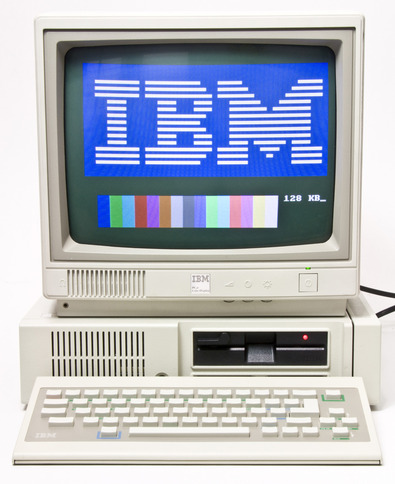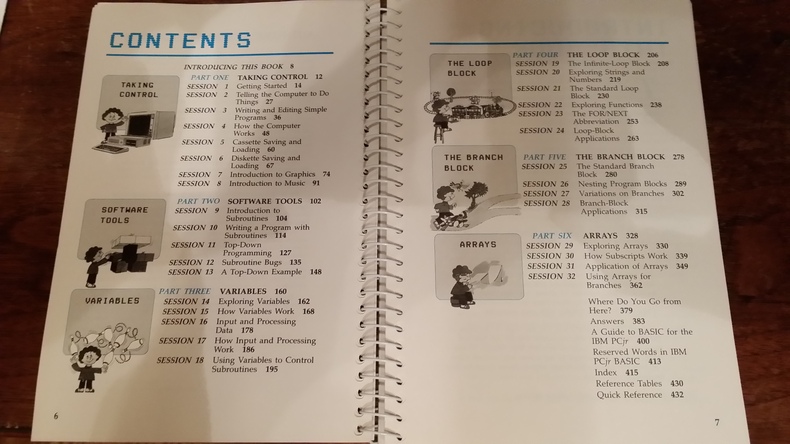I wrote my first program on an IBM PC XT my parents had bought to run the books for their farm. It was in the BASIC programming language.
That computer came with a collection of ring binders, one of which contained a reference for BASIC.

I don’t remember what the first thing I wrote was, but it probably looked like this:
10 PRINT "CLINT IS AWESOME"
20 GOTO 10I went by Clint back then. Now only my mom calls me that, and my wife when she wants to get on my nerves.
Anyway, that code would print out CLINT IS AWESOME in an infinite loop. I didn’t get very far with BASIC on the PC XT, because as soon as my parents saw I could tell the computer what to do, they got pretty worried about their books in Lotus 1-2-3.
A few weeks later, they came home from the John Deere tractor store with an IBM PCjr. I know that sounds impossible, but IBM sold computers through the tractor store. The PCjr was not selling well – it was an odd idea for a computer with even odder execution – so they were heavily discounted. I was lucky for that: my parents got the upgraded version with 256KB of RAM. The PCjr had no hard drive, only a floppy drive and two slots for cartridges.

What the PCjr did have, however, is one of the best books introducing people to programming that I can imagine for the time (1983). Hands-On BASIC was written by Arthur Luehrmann and Herbert Peckham, who had founded a partnership called “Computer Literacy” to create better educational materials for use with computers.

Every section had detailed instructions with pictures, questions for you to think about, and fun projects. I dream of creating my own book based off its style someday. It would use Racket as the programming language, as I think it’s about as close as you can get to the self-contained nature that BASIC had back then.
I had that computer for 7 years and programmed on it every day. I wrote games, invoicing systems, imaginary friends, dice rollers, and music compositions on it, all in BASIC.
Earlier this year when I accepted my job at The Iron Yard, I knew I’d be teaching Ruby. It had been over 2 years since I’d written Ruby. I felt confident, but needed a warm-up. To do so, I wrote a BASIC interpreter in Ruby. I didn’t finish it, but it can run simple BASIC programs.
I’m thinking about writing a BASIC compiler to Python bytecode over the Christmas break, before I start teaching Python in January.